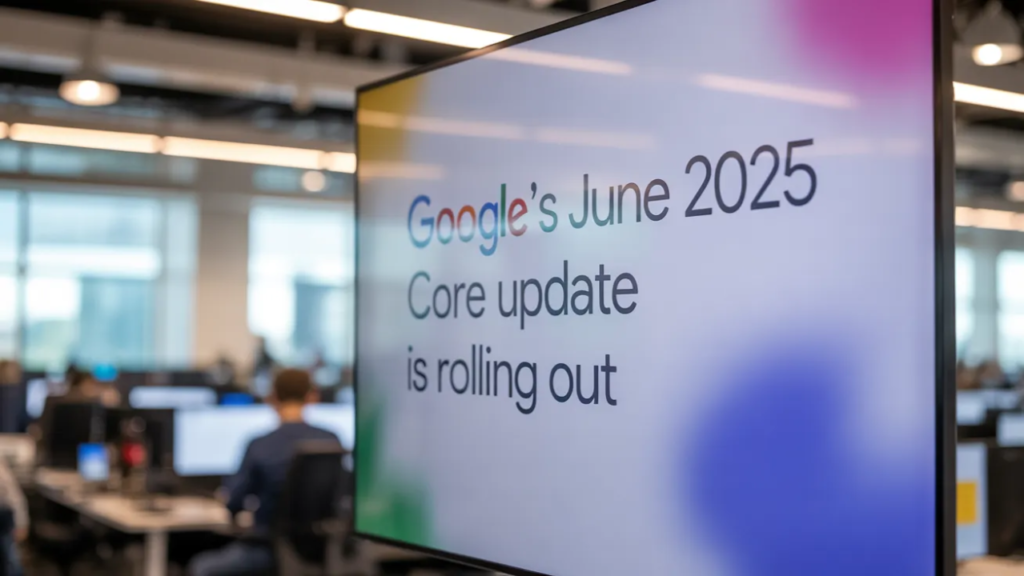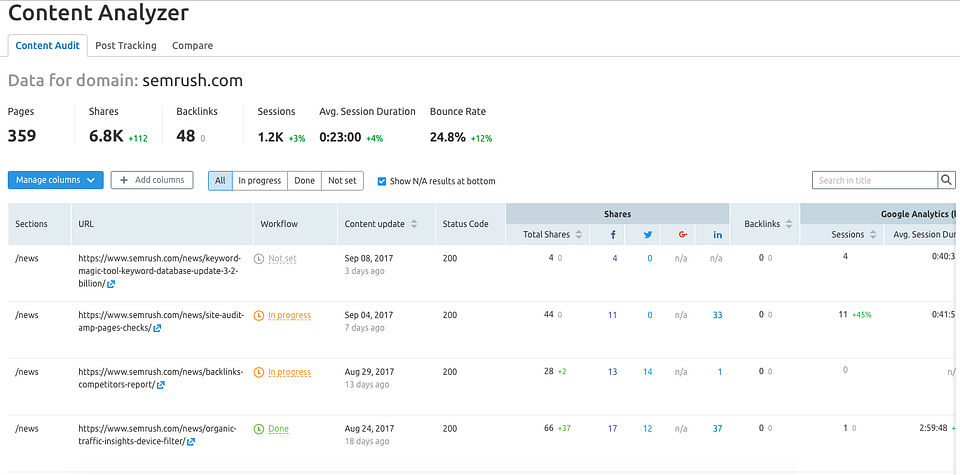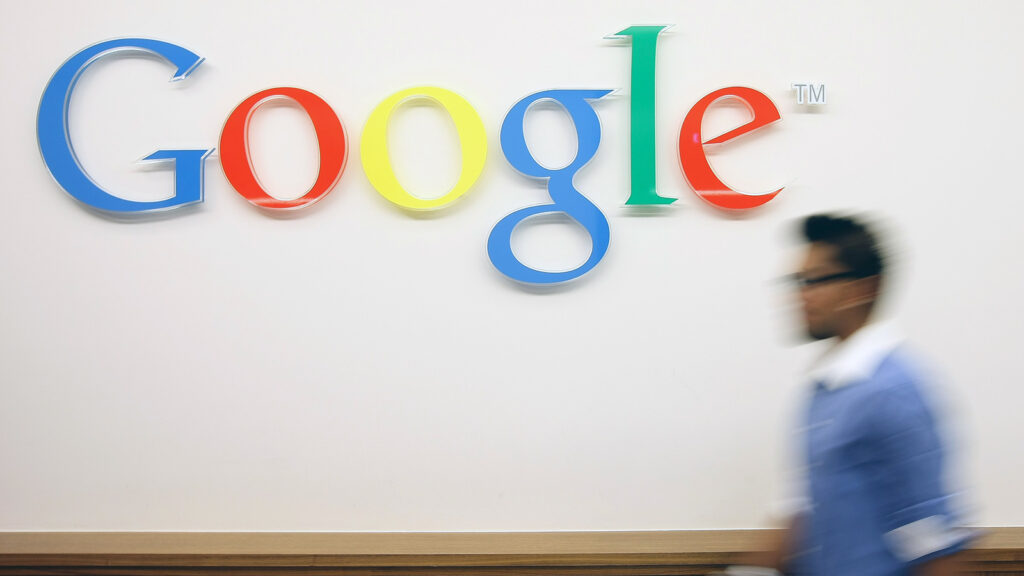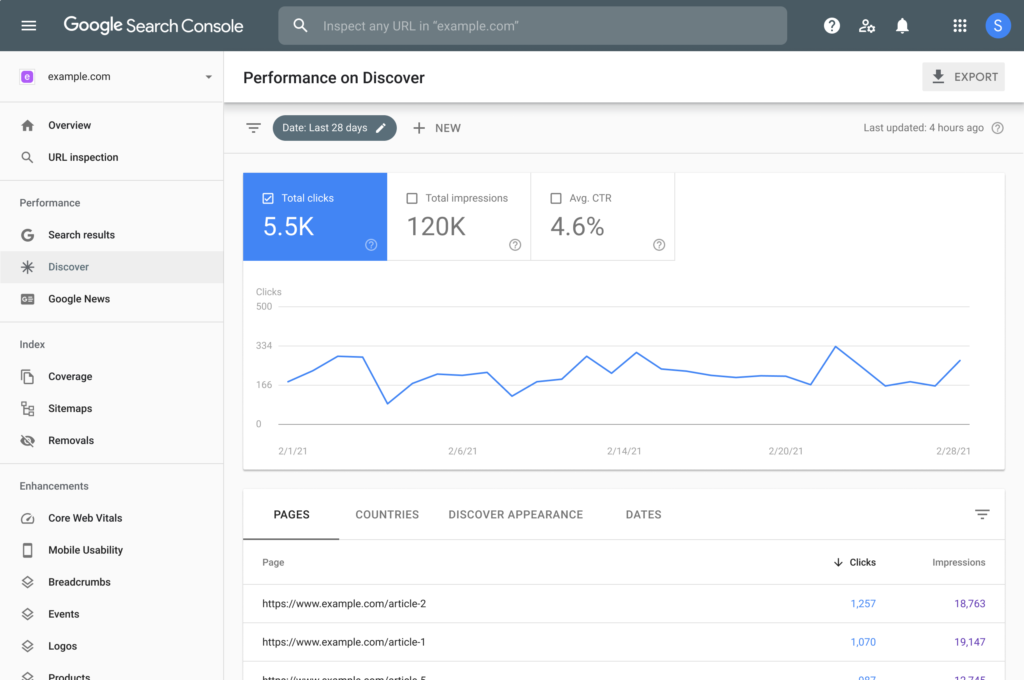Google just dropped its June 2025 Google Core Update 2025, and the search landscape is already feeling the shakeup.
Whether you’re a site owner, SEO specialist, or digital marketer, you’ve likely seen changes in rankings, traffic, or both over the past few days. This broad core algorithm update, part of Google’s ongoing mission to improve content quality and relevance, brings a renewed focus on E-E-A-T, topical authority, and how search interacts with AI, as well as zero-click results.
In this blog, we’ll break down what the Google 2025 core update means, how it may be affecting your site, and what you can do right now to protect, or even improve, your search visibility. Let’s dive into what’s changed and how to adapt.

Overview of the June 2025 Core Update
Google officially began rolling out its Google Core Update 2025 on June 30, 2025, at approximately 7:34 AM PDT. As with most broad core algorithm updates, this rollout is expected to take two to three weeks to complete fully, meaning fluctuations in search rankings and traffic may continue through mid-July.
This update is global in scope, affecting websites across all industries, languages, and regions. It follows Google’s standard approach of refining how content is assessed for relevance, quality, and authority, without targeting any specific page or site.
Notably, this is the second major core update of 2025, building on the March 2025 update. While March introduced refinements to content evaluation signals like experience and trust, the June update appears to go further, strengthening the role of topical authority and real-world expertise in ranking decisions, while also preparing the landscape for AI-driven search features like AI Overviews and voice-enabled queries.

Major Changes Introduced by the Update
The June Google Core Update 2025 brings a series of impactful shifts that reinforce Google’s long-term direction: serving content that is helpful, reliable, and relevant. Below are the five key areas where this update is driving major change:
1. Increased Emphasis on E‑E‑A‑T
Google is doubling down on content that reflects Experience, Expertise, Authoritativeness, and Trustworthiness. Websites that publish first-hand insights, expert-backed content, and transparent sourcing are more likely to see ranking gains. Pages lacking author credentials, factual accuracy, or topical clarity may experience visibility drops.
2. Rise of AI Overviews and Zero-Click SERPs
With the broader rollout of AI Overviews, users are increasingly getting direct answers from the search results, without needing to click through to a website. This shift reduces traditional traffic, especially for top-of-funnel queries. To stay visible, brands must optimize for AI-friendly formats like concise answers, bullet points, and structured Q&A.
3. Content Depth and Freshness Matter More
Google is rewarding websites that go beyond surface-level content. Pages that demonstrate topical depth, cover multiple subtopics and are regularly updated signal greater relevance and authority. Evergreen pages should be audited frequently and expanded when possible to reflect the latest information.

4. Crackdown on Low-Quality & Spammy Links
Manipulative link strategies, such as link farms, paid placements, or irrelevant guest posts, are being further devalued. Google continues to favor organic, contextual backlinks from authoritative sources, especially those within the same topical niche.
5. Optimization for Conversational and Voice Search
With more users searching via voice or in natural language, Google is aligning its ranking systems to reward content that matches conversational queries. Websites that address “how,” “what,” “why,” and “best” queries using simple, direct language stand to benefit.
These changes signal a clear message: SEO in 2025 isn’t just about keywords, it’s about credibility, clarity, and context. Adapting to these shifts is essential for long-term ranking stability.
For more information: Navigating SEO trends 2025: The future of search engine optimization
Key Observations and Volatility
Just days into the June Google Core Update 2025, the search ecosystem is already reacting. By July 2, noticeable ranking fluctuations began surfacing across a range of verticals, and early data points suggest that this could be one of the more impactful updates in recent memory.
Early Movement Detected
Multiple SEO monitoring tools reported a spike in volatility within 48 hours of the rollout.
- Semrush Sensor saw a jump in volatility scores across categories like Health, Finance, Shopping, and News.
- MozCast tracked unusual SERP turbulence, especially in featured snippets and People Also Ask boxes.
- Sistrix confirmed significant visibility swings, particularly for websites that had already been affected by the March 2025 core update.
While Google’s rollout is expected to continue over two to three weeks, early activity suggests many sites are already feeling the effects.
Who’s Gaining, And Who’s Losing?
Emerging winners include websites that consistently invest in high-quality, experience-driven content. Brands with strong topical authority, structured content, and clear authorship signals are seeing visibility boosts.
On the flip side, affiliate-heavy blogs lightly refreshed evergreen content, and pages built largely through AI or programmatic methods are seeing ranking drops. Sites with spammy backlink patterns, particularly those using inorganic growth tactics, are also showing signs of suppressed visibility.

The SERPs Are Shifting Fast
If your site is experiencing traffic dips, you’re not alone. This update is already showing signs of redistributing visibility toward content that better matches Google’s evolving signals, not just in keywords, but in-depth, trust, and user value.
As the update continues to roll out over the coming weeks, the volatility may intensify. Brands and SEO teams should brace for continued movement and begin auditing performance using tools like Google Search Console, GSC Insights, and third-party trackers.
What This Means for You?
The June Google Core Update 2025 isn’t just a background algorithm shift; it’s a signal of where search is heading, and it brings real implications for every player in the digital ecosystem. Whether you’re running an SEO campaign, managing a business, or simply searching for answers online, the ripple effects are already underway.
For SEO Experts: A Wake-Up Call on Content Standards
If you manage content or technical SEO, this update demands more than casual attention. The bar for content quality has officially been raised. That means reassessing not just keyword usage, but whether your content truly reflects first-hand experience, clarity, and topical depth. Thin or outdated blog posts? It’s time for a cleanup.
Another key takeaway is the growing role of AI snippets and conversational queries. As AI Overviews become more prominent, optimizing for clear, structured, and voice-friendly answers is now a must, not a nice-to-have anymore.
Finally, internal linking structures and backlink portfolios are back in the spotlight. Google’s increasing scrutiny on manipulative links means natural, context-rich linking strategies are more essential than ever.

For Users (Searchers): Faster, Smarter, More Relevant Search
For everyday searchers, the update brings a net positive. Search results are becoming more contextually relevant, trustworthy, and concise. But perhaps the most visible change is the rise of instant answers. AI Overviews now pull key information directly into the SERP, often reducing the need to click through to websites.
This trend is reshaping user behavior and expectations. While it means faster answers, it also places pressure on publishers to ensure their content can still be seen, even if it’s not clicked.
In short, the June Google Core Update 2025 is a crossroads moment: a test of content integrity, strategic adaptability, and user-centricity. If your site brings value, clarity, and credibility, this update may be your biggest opportunity yet.
For Businesses: Brace for Volatility, But Invest in Visibility
If you’re a business owner or marketing lead, expect ranking and traffic shifts in the coming days and weeks, even if you haven’t made any recent changes to your site. This isn’t necessarily a penalty. Google’s updates often redistribute visibility to sites that meet its evolving quality standards more closely.
Your next move should be to double down on topical coverage and thought leadership. Brands that demonstrate deep expertise, publish consistently, and offer unique value will be the ones rewarded. Besides, structured data also plays a more vital role now. Implementing schema markup can help Google better understand your content and increase the odds of being featured in AI summaries or snippets.

Final Thoughts: A Turning Point for Content Strategy
The June Google Core Update 2025 isn’t just another algorithm tweak; it’s a clear shift in how Google defines quality, relevance, and visibility. For content creators, marketers, and business owners, it marks a turning point in how we must approach search strategy.
Ranking in 2025 is no longer about how many keywords you can squeeze into a page; it’s about understanding search intent and proving your trustworthiness. Google wants to surface content that doesn’t just match terms but truly answers questions, solves problems, and comes from credible sources. That means investing in:
- Real author expertise
- Transparent, accurate sourcing
- User-first formatting and readability
If your rankings took a hit, or you’re unsure how this update impacts your site, don’t wait until traffic drops further. At Wgentech, we specialize in algorithm-resilient SEO strategies that align with Google’s latest standards:
- People-first content
- E‑E‑A‑T optimization
- AI and featured snippet readiness
- Technical SEO and structured data
Let us help you audit, recover, and future-proof your site, so the next update works in your favor. Book a free consultation or get your personalized SEO recovery plan today.








